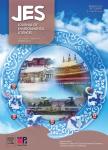Organic matter and concentrated nitrogen removal by shortcut nitrification and denitrification from mature municipal landfill leachate
Organic matter and concentrated nitrogen removal by shortcut nitrification and denitrification from mature municipal landfill leachate作者机构:College of Environmental and Energy Engineering Beijing University of Technology Beijing 100022 China
出 版 物:《Journal of Environmental Sciences》 (环境科学学报(英文版))
年 卷 期:2007年第19卷第6期
页 面:647-651页
核心收录:
学科分类:083002[工学-环境工程] 0830[工学-环境科学与工程(可授工学、理学、农学学位)] 08[工学]
基 金:Project supported by the National Natural Science Foundation of China(No.50521140075) the Funding Project for Academic Human Resource Development in Institutions of Higher Learning under the Jurisdiction of Beijing Municipality(PHR(IHLB)) the international cooperationproject financed by Beijing Municipal Science and Technology Commission
主 题:mature landfill leachate UASB+A/O shortcut nitrification carbon source
摘 要:An UASB+Anoxic/Oxic (A/O) system was introduced to treat a mature landfill leachate with low carbon-to-nitrogen ratio and high ammonia concentration. To make the best use of the biodegradable COD in the leaehate, the denitrifieation of NOx^--N in the reeireulation effluent from the elarifier was carried out in the UASB. The results showed that most biodegradable organic matters were removed by the denitrifieation in the UASB. The NH4^+-N loading rate (ALR) of A/O reactor and operational temperature was 0.28- 0.60 kg NH4^+-N/(m^3-d) and 17-29℃ during experimental period, respectively. The short-cut nitrification with nitrite accumulation efficiency of 90%-99% was stabilized during the whole experiment. The NH4^+-N removal efficiency varied between 90% and 100%. When ALR was less than 0.45 kg NH4^+-N/(m^3.d), the NH4^+-N removal efficiency was more than 98%. With the influent NH4^+-N of 1200-1800 mg/L, the effluent NH4^+-N was less than 15 mg/L. The shortcut nitrification and denitrifieation can save 40% carbon source, with a highly efficient denitrifieation taking place in the UASB. When the ratio of the feed COD to feed NH4^+-N was only 2-3, the total inorganic nitrogen (TIN) removal efficiency attained 67%-80%. Besides, the sludge samples from A/O reactor were analyzed using FISH. The FISH analysis revealed that ammonia oxidation bacteria (AOB) accounted for 4% of the total eubaeterial population, whereas nitrite oxidation bacteria (NOB) accounted only for 0.2% of the total eubaeterial population.



